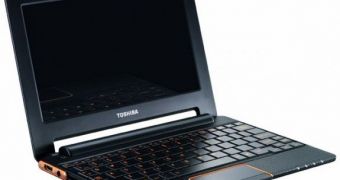The term MID, short for mobile Internet device, is usually used for those small form factor handsets that allow web browsing while traveling. These products usually make a point of not being too large, since they have to fit in small travel bags and weigh as little as possible. As such, one would not expect Toshiba's 'cloudbook' to actually be about as wide as a netbook. The PC makers decided to go a bit off-script when it designed its first Tegra 2-based MID.
The so-called MID bears the name of AC100/dynabook AZ and is described by the official announcement as “a stunning new device that is always on and highly portable.” At first glance, one might mistake it for a netbook, since the display itself has a diagonal of 10.1 inches and a native resolution of 1024 x 600 pixels. That impression would only be dispelled upon learning of the machine's insides, however.
The AC100/dynabook AZ has a configuration based on the mobile chipset known as Tegra 2, developed by NVIDIA. This SoC has a processor clocked at 1GHz, as well as 512MB of RAM and 16GB of flash storage.
Additionally, the product features mobile broadband connectivity, 10/100 Ethernet, Bluetooth 2.1 and 802.11 b/g/n WiFi. All of these bits and chips are crammed together inside a slim enclosure that weighs a total of only 870 grams.
In order to ensure that its 'cloudbook' is as appealing as possible, Toshiba threw in a few bonuses, such as a full-sized keyboard, a 1 .3 megapixel webcam and the alleged ability to boot the pre-loaded Android 2.1 OS in under a second. Finally, the machine utilizes a 3-cell battery that can keep fueling the MID for up to 8 hours. Unfortunately, pricing details have not been disclosed and end-users will have to wait until August before they can get their hands on a model.

 14 DAY TRIAL //
14 DAY TRIAL //